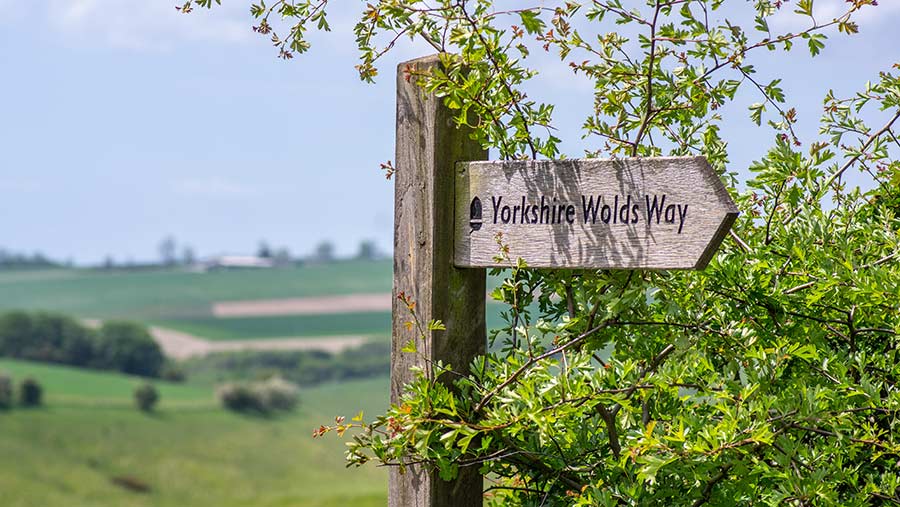Natural England announces plans for new protected areas
 © Alex McGregor/Adobe Stock
© Alex McGregor/Adobe Stock Two of England’s most iconic landscapes are being considered to become new areas of outstanding natural beauty (AONB), alongside extensions to the Surrey Hills and Chilterns AONBs.
The Yorkshire Wolds and the Cheshire Sandstone Ridge have been put forward to be recognised as protected areas and all four areas will now be formally considered for AONB status by Natural England.
There are currently 34 AONBs in England and 10 National Parks (total 44).
See also: Defra grants available for farmers to improve protected landscapes
The government says this work will contribute to its commitment of protecting 30% of our land by 2030 and improve biodiversity, while taking forward the Glover review’s recommendation to designate more areas of the country for their natural beauty.
Responding to the announcement, the NFU said it would work with Natural England and consult with its members on the four areas being considered for new or extended AONB status.
NFU environment forum chair Richard Bramley said viable farm businesses “must be at the heart of the decision-making process so that our work to protect and enhance our valuable landscapes, which millions of people visit and enjoy every year, continues”.
The Countryside charity Campaign for the Protection of Rural England (CPRE) has welcomed the announcement.
Jan Arger, chairman of CPRE North Yorkshire, said: “The announcement that the Yorkshire Wolds may become one of our newest AONB is fantastic news and something CPRE has locally campaigned for repeatedly over many decades.
“We are delighted that this outstanding landscape may finally get the recognition it deserves.”
Planning implications
But there may be planning implications for landowners/occupiers, as AONB designation means some permitted development rights are not available – and planning applications generally come under greater scrutiny than in non-designated areas.
For example, Class Q rights that allow conversion for residential use of qualifying agricultural buildings, cannot be used in National Parks or AONBs.
Charles Holt, of the Farm Consultancy Group, said: “Permitted development rights as Class Q planning applications are impossible in AONB areas.
“This will limit farmers’ potential moves in this regard, to both find other uses for redundant and (sometimes) very worthy old farm buildings that can be considered as assets, and for them to earn a substantial capital sum from their sale and/or development.”
Mr Holt advised any farmer with buildings in the proposed AONBs on which they were hoping to gain a Class Q planning approval, to apply now, before the AONB is formally in place.
However, Class R – agricultural building conversion to flexible commercial use – can be used in an AONB.
